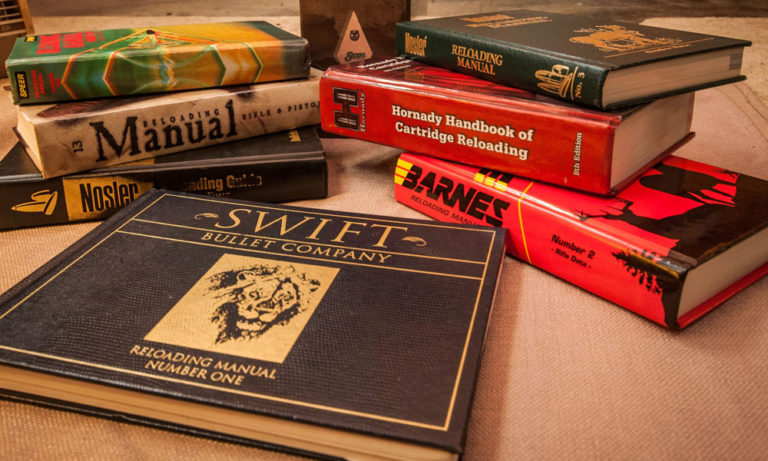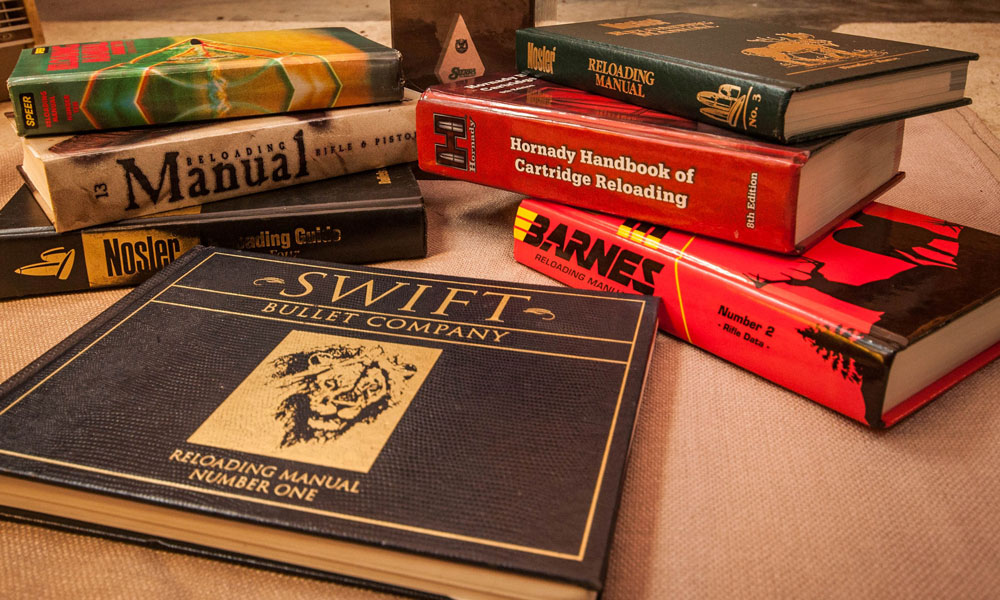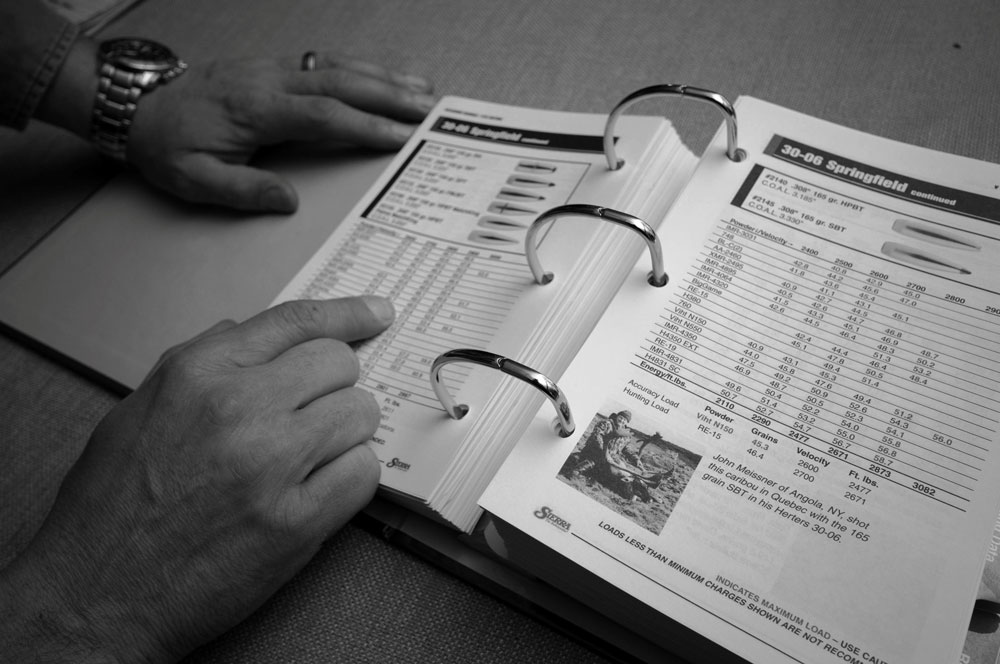

The reloading manual, be it in hardcopy or digital form, is a must-have for every reloader. These precious volumes contain the dimensional data and powder charges for each of the different calibers, for the wide variety of bullets available. They offer test data, from both conventional handguns and rifles or from a universal receiver, which has been proven to be safe in laboratory situations.
Most of the bullets manufacturers, along with the powder manufacturers, have their own reloading manual, and you will probably end up owning more than one. I keep all that I can find, for several different reasons.
One, not all bullets are created equally. As an example, let us use the very popular 180-grain .308-inch diameter bullet. The loads provided by a particular manual may have been tested for a 180 grain spitzer, and proved to be safe with a certain powder charge, but if you were to use that same load with a boat tail spitzer, or a mono-metal bullet that is longer for the same weight, problems can arise.
Two, not all reloading manuals test each bullet with all of the suitable powders for that cartridge. In this current environment of component unavailability, we as reloaders are sometimes forced to use those powders that are available to us, rather than those we would like to use. Downloading several bullet and powder companies' data, and purchasing several different reloading manuals will help you to cover all the bases.
Old reloading manuals are also valuable. The chemical formula for each powder can’t change, or all prior data would be worthless. Now, as new cartridges are introduced the manuals need to be updated to include them, but for the cartridges that have been with us for decades there is often a small treasure trove of data from yesteryear.
I have managed to collect manuals from the 1950s, 60s, 70s and so on. Several years back, I was looking to develop a load for my .300 Winchester Magnum using 220 grain round nosed bullets and IMR 4064, as I had quite a bit of it on hand. Searching through some old manuals I found what I was looking for in my Dad’s early 70s Sierra manual. You see, they didn’t have as many powders to test in that era, and as IMR 4064 isn’t quite what makes the .300 Winchester shine, the newer manuals had stopped testing with it.
I wanted a velocity similar to the .30-06, to use in my native New York’s Catskill and Adirondack mountains, and that manual gave me what I needed: 220 grain bullets at 2,425fps, delivering minute-of-angle accuracy at 100 yards, and deer and bear alike have fallen to that load. I’d never have found it had I not saved manuals.
It is also a good idea to have several manuals on hand for a cross reference. We are all human, and typographical errors can happen. When developing a new load for myself or a customer, I check several manuals to verify that the powder range is at least similar, and no errors have occurred in printing.

Lastly, reloading manuals are cool! I really enjoy reading the cartridge histories, as written by some very authoritative persons. Some will give good insight to the way a cartridge behaves, some offer loading tips for the cartridge at hand, and my favorites include the hunting stories of the author.
Scour the Internet, search the manufacturers websites for good data, buy some manuals and start your own reference library for all your loading needs!
More From Philip Massaro:
 Handloader's Digest 19th Edition
Handloader's Digest 19th Edition
By Philip Massaro
The publisher of the “World’s Greatest Gun Book” is proud to announce the return of “World’s Greatest Reloading Book.” Whether it’s information on this year’s new ammunition reloading equipment or an in-depth article on obscure wildcat cartridges, you’re certain to find what you’re looking for in this authoritative annual. Get it here








